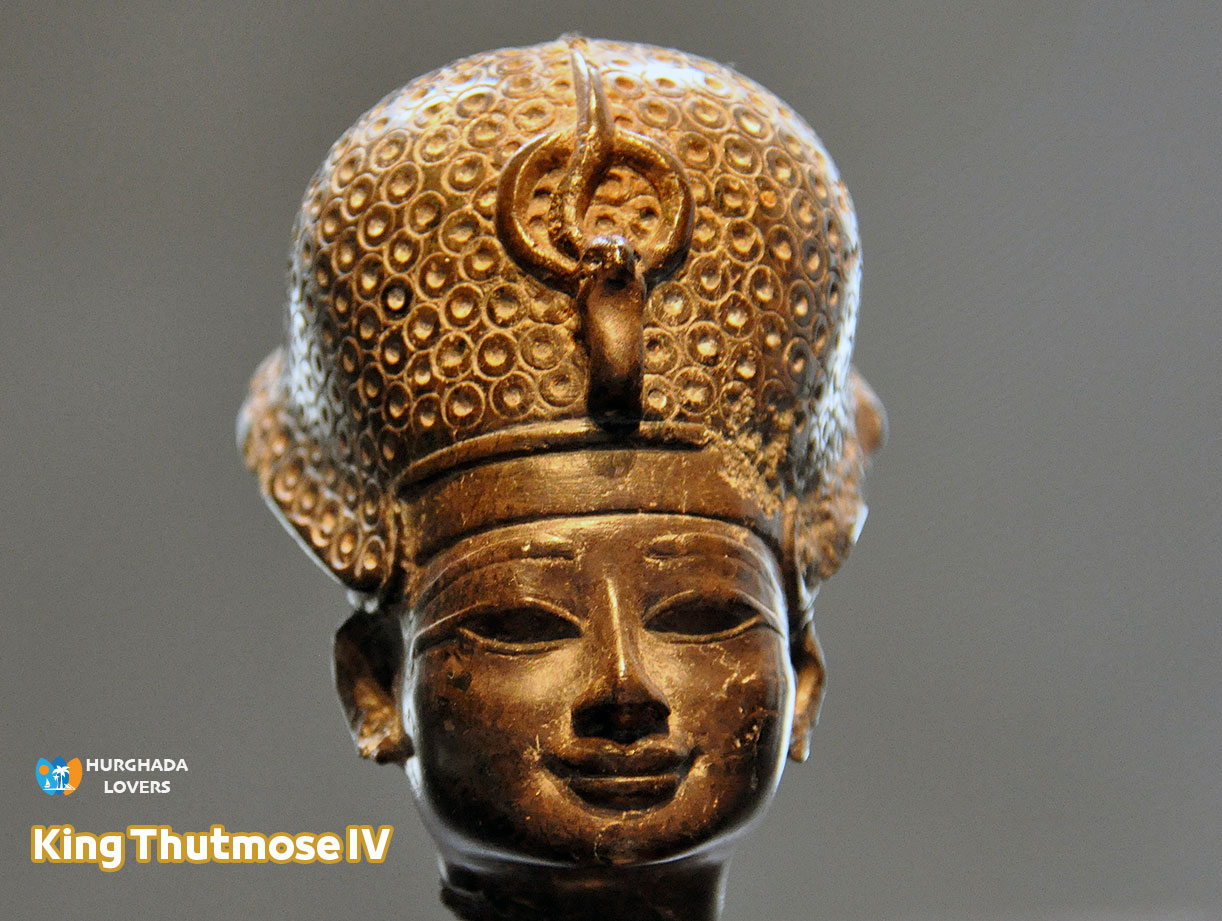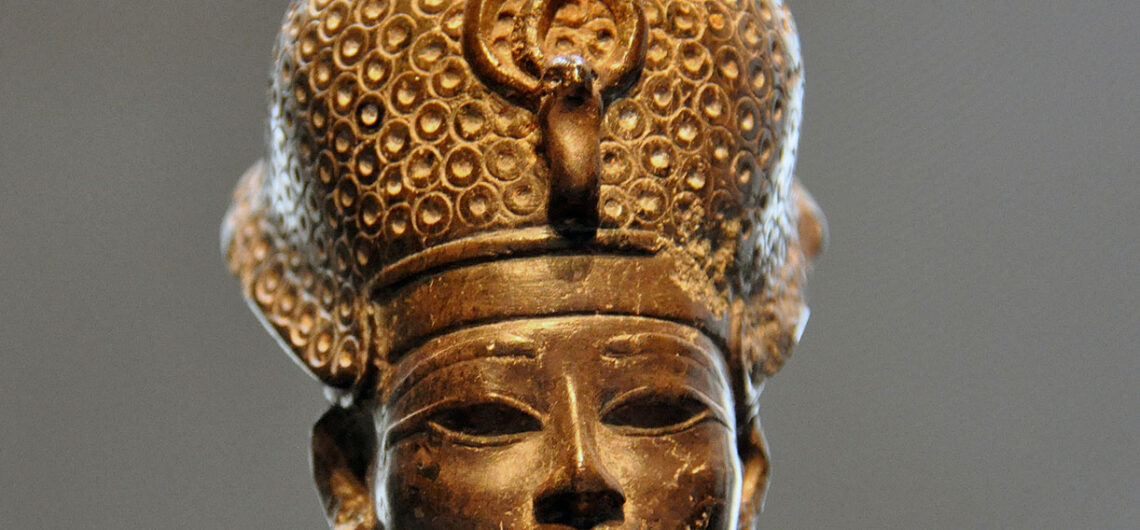King Thutmose IV – Egyptian Pharaohs kings – Eighteenth Dynasty of Egypt – The New Kingdom
Facts Thutmosis IV, Tuthmosis IV, Thothmes IV & History The Greatest of Egyptian Pharaohs kings | Secrets, Biography, Accomplishments in Ancient Egypt, Tomb, Mummy, Life and Death of the King, the 18th Dynasty and more about Ancient Egypt History.
King Thutmose IV Facts
Ruling period in Ancient Egyptian Government: 1401–1391 BC
Sentence period: 10 years.
Father: King Amenhotep II
Mother: Queen Tiaa, the most famous “Female Pharaohs” Pharaonic queen of Egypt.
Sons: King Amenhotep III
Archaeology:
- Stone statues to indicate the development of Architecture in ancient Egypt and the arts of Sculpture in Ancient Egypt,
- Tomb of Thutmose IV + Prince Amenemhat son of Thutmose III, and Princess Tentamun | KV43 in the Valley of the Kings Tombs in Luxor “Thebes”
- stone hall in the Karnak Temple complex.
- Dream painting.
What was Thutmose IV known for?
- He assumed the throne of ancient Egypt immediately after the death of his father, King Amenhotep II and He received the royal Coronation of the Pharaohs.
- The Pharaonic king is considered the eighth king of the Eighteenth Dynasty of Egypt in the era of The New Kingdom in ancient Egypt and one of the best and most famous pharaoh kings throughout history.
- The king’s mummy was studied with X-rays and it was discovered that he died at a young age and was weakly built.
- King Thutmose IV is the son of King Amenhotep II, who had 5 sons fighting among themselves to obtain the rule of Egypt.
- Thutmose IV claims that he saw the God Ra “Egyptian deities” and tells that the details of the dream are that the Sphinx spoke to Thutmose IV.
- He told the Sphinx in a dream that he would give him Egypt if he preserved his statue and removed any sand accumulated on it.
- Details of the dream are recorded on a plaque that was found in the hands of the Sphinx.
- From the above it is clear that Thutmose IV was not the real king of the throne of Egypt, while it was estimated that one of his brothers would be in his place.
The story of his rule of strange Egypt:
After the death of King Amenhotep II, the throne seat was empty. Prince Thutmose IV at that time composed a fictitious story from his imagination, where he wrote texts on a granite tablet “Ancient Egyptian Metallurgy” and placed them between the claws of The Sphinx of Giza in The Pyramids of Giza area “Great Pyramid of Giza, Pyramid of Khafre, Pyramid of Menkaure” so that he could rule the throne of Egypt easily.
Story details:
Prince Tuthmosis IV used to go to the Giza plateau to practice hunting. One day he rested next to the statue of the Sphinx, “Horus or Sister,” which means the God Horus, “Ancient Egyptian gods and Goddesses” on the horizon or the sky according to the Ancient Egyptian religion.
While the prince was sleeping, he saw the Sphinx in a dream talking to him and asking He is required to remove all the sand and dirt surrounding his entire body, and if he does that, he will become a legitimate ruler to rule Egypt and the country.
After King Thutmose IV took over the rule of Egypt and the country, he ordered the removal of all dust and sand from around the Sphinx and his story to be written on a granite stone slab and placed between the statue’s front claws.
Campaigns
- The king, after assuming the rule Strengthening the Military of ancient Egypt, established campaigns in northern Syria and was able to put down the Revolutions in Ancient Egypt that were in his place during that period.
- From other campaigns that he also carried out, which are campaigns on Lebanon, and he was able to obtain a very large amount of cedar wood.
- The king used this group and built the sacred Ark of God Amun to increase Trade in Ancient Egypt, and this story is recorded on an Obelisks that is currently in Rome.
- Relations between Egypt and Syria began in that period and ended with a peaceful alliance between them, and one of the manifestations of this alliance was the royal marriage between Thutmose and the daughter of the Kingdom of Mitanni
- Thutmose also campaigned on the country of Kush in Nubia and was able to put down the revolution and was able to return to Egypt with prisoners and other spoils.
Monuments of King Thutmose IV
- Karnak Temple contains a large collection of additions to King Thutmose IV.
- Where there is a group of inscriptions on the gate of the temple.
- In addition to other inscriptions of offerings that are presented to the god Amun when he returned to Egypt after his campaign against the countries of Asia.
- Statues of the king were found, in addition to his construction of an obelisk located in the Karnak temple. The obelisk was cut down during the reign of King Thutmose III.
- The obelisk is made of red granite and is approximately 32 meters long, which is considered the tallest obelisk in the world.
- The Romans took that obelisk with them when they came to Egypt in the first century BC.
- There are some texts by Ancient Egyptian Language that refer to King Thutmose IV ordering the construction of a wall because of a dream.
- It is said that this wall is about 86 meters long and 46 meters long, and the height of the two walls is approximately one meter.
- In addition to the previous Egyptian Monuments in Egypt Archaeological Sites, books bearing his name were found in the Temple of Dendera in Qena, in addition to other books being found in Memphis, the ancient city El Kab Or Elethya, Aswan, Fayoum, and a small Egyptian Temples..
The family
- King Thutmose IV married Queen “Nefertari”, a queen dating back to the Eighteenth Dynasty.
- She was the first wife of the pharaoh, while “Mut Em Weah” was the secondary wife of the king and she is also the mother of King Amenhotep III.
- The king also married Yaart, a princess who returns to the country of Mitanni, and there is no evidence that the king was first from that wife.
- King Thutmose IV had sons, apart from Amenhotep III, namely Thutmose and Amenambet, as well as Amenemhat, in addition to 9 females.
Tomb of King Thutmose IV
- King Thutmose IV ruled Egypt for about 9 years and died after that.
- The king prepared his own tomb, which is located in the Valley of the Kings and bears the number 43.
- The tomb was discovered in 1908 By American Egyptologist Theodore Davies.
- When the cemetery was found, it was discovered that it had been robbed and looted before by Ancient Egyptian Grave Robbers.
- A number of antiquities were found in the cemetery, however, including pieces of furniture, Funerary Equipment and a war chariot.
- The mummy of the king was transferred to the tomb of King Amenhotep II, which bears the number 35.
- This transfer took place parallel to the era of chaos, theft and looting of graves that Egypt went through.
- The mummy of the king was discovered in 1898 AD.
- After examining the mummy, it was found that the king died at an approximate age of 30.
- It is said that the king suffered from a disease that led to his death, because his mummy was found very thin compared to other kings.
- Another antiquity that goes back to the king is the presence of a tablet describing the dream of Tuthmosis IV, which was the reason for his assumption of power, even though he is not the legitimate king.
Note: Facts and secrets of the history of the Pharaoh kings will be added soon…
Hurghada Excursions Lovers, Best Travel Agency in Hurghada to provide daily tours to visit the Tourist attractions of Luxor by Hurghada to Luxor Tours.

